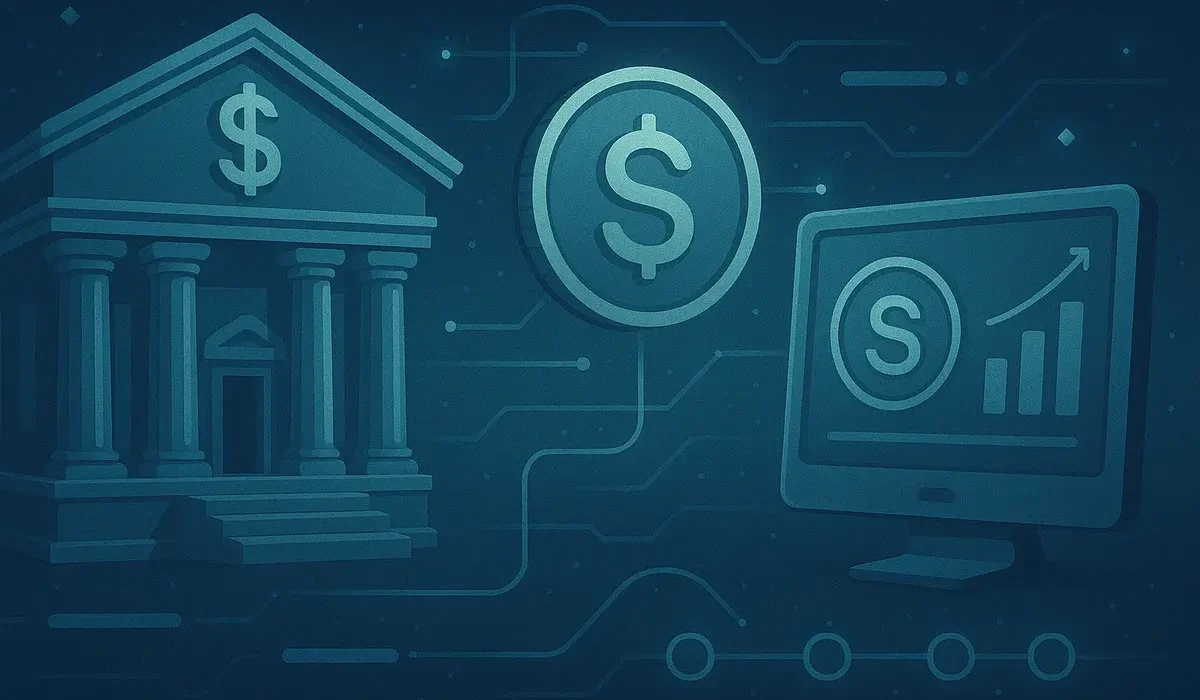Stablecoins in Banking: How Digital Dollars Are Reshaping Finance
As of mid-2025, stablecoins—cryptocurrencies pegged to traditional assets like the U.S. dollar or euro—are no longer fringe tokens. They are becoming core infrastructure for both fintech firms and traditional financial institutions. Here’s why stablecoins deserve serious attention from payment platforms like TTRPay.
1. Regulatory Clarity at Last: U.S. Official Frameworks
The U.S. has just passed its first comprehensive stablecoin law:
On July 17, 2025, the GENIUS Act passed the House with bipartisan support, requiring full reserve backing and monthly public disclosures. On July 18, President Trump signed it into law.
Banks and credit unions can now legally issue stablecoins, under dual federal and state supervision.
While interest payouts on stablecoins remain prohibited, broader regulatory clarity removed a massive barrier to mainstream adoption.
2. Banks Are Already Issuing Stablecoins—and Seeing Benefits
According to the State of Stablecoins 2025 survey:
49% of banks are already using stablecoins for payments—Tier‑1, regional, and emerging banks alike.
Top benefits include faster settlement (48%), transparency (36%), and liquidity improvements (33%)—surpassing cost savings as drivers.
Key real-world examples:
Bancolombia’s COPW: A Colombian‑peso stablecoin for real-time retail settlement.
Banking Circle’s EURI: Euro-backed token compliant with EU’s MiCA framework for B2B cross‑border settlement.
3. Global Regulatory Architecture: MiCA, Asia & Beyond
Europe (MiCA):
As of December 30, 2024, EU’s MiCA regulation fully applies across 27 countries. It mandates 1:1 reserve backing, issuer licensing, fund segregation, and bans algorithmic stablecoins and interest payouts.
Non‑compliant tokens like USDT have been delisted on compliant exchanges, while USDC and EURI remain fully operational under MiCA.
Asia‑Pacific:
Singapore’s MAS requires full reserve backing and redemption within days; tokens like XSGD lead compliance innovation.
Japan updated its Payment Services Act allowing trust-type stablecoins to allocate up to 50% of reserves to secure financial instruments like government bonds.
Hong Kong will implement its licensing regime on August 1, 2025, with capital and custody requirements for issuers.
Across regions, regulatory regimes now provide a clear path for banks to legally launch, manage, and integrate stablecoins.
4. Real-World Use Cases: From Programmable Treasury to Payments
JPMorgan’s JPM Coin
Launched in 2019, JPM Coin now processes daily volumes in the high single-digit billions, rising sharply after introducing programmable payment capabilities triggered by real-world events like deliveries or service completion.
Standard Chartered / Asia JV
Standard Chartered’s collaboration to issue a Hong Kong‑dollar stablecoin via Animoca Brands and HKT is part of MAS sandbox trials, targeting cross-border tokenized payments.
Institutional Collabs
Banks partner with providers like Circle, Paxos, and Corda for private rails—enabling clients to move funds faster with lower cost and higher liquidity.
BBVA / Société Générale / Fiserv pilots
BBVA is testing fiat‑backed stablecoins via Visa Tokenized Asset Platform.
SocGen’s USD CoinVertible (dollar‑pegged token) targets on-chain euro‑dollar settlement with compliance under MiCA, reserves custodied by BNY Mellon.
Fiserv’s FIUSD aims to bring real‑time token rails to small banks and credit unions via Circle / Paxos partnership.
5. What Banks—and TTRPay—Stand to Gain
1. Revenue & liquidity
Faster settlement accelerates cash flow. TREASURIES become programmable. Operational capital is freed up for more business use.
2. Competitive edge
Banks that issue stablecoins can bypass payment systems, host settlement flows, and retain customer balances that would otherwise exit to fintech products.
3. Resilience & compliance
Regulatory frameworks align stablecoin issuance with AML/KYC and reserve standards, reducing systemic risk compared to unregulated alternatives
6. Strategic Recommendations
Enable token rails integration: Support USDC, EURI, FIUSD rails to facilitate fast cross-border flows and B2B settlement.
Support programmable treasury: Build APIs to trigger payments based on events—like order delivery, time-based subscriptions, or milestones.
Partner with banks and fintechs: Co-develop white-label stablecoin solutions that let issuers onboard merchants quickly.
Offer compliance layer: Embed real-time reserve transparency, audit reports, and KYC/AML checks into stablecoin issuance.
Educate merchants via content marketing: Publish blog use cases on virtual stablecoin issuance, treasury automation, and cross-border token settlement.
Evolutionary models envision a hybrid network where central bank digital currencies (CBDCs) and private stablecoins coexist—bridged together so private tokens are backed by public reserves, enhancing systemic trust and resilience. As private stablecoins mature, they’ll interoperate with evolving CBDC systems like the digital euro or platforms like mBridge.
Stablecoins in banking are no longer speculative—they’re strategic. Regulatory clarity, bank-led issuance, programmable infrastructure, and interoperable design are making them foundational to payments innovation. For TTRPay, this means:
A content opportunity: Thought leadership on stablecoin use in regulated environments for treasury, settlement, and cross-border finance.
A product roadmap: Integrating token rails, automating programmable payments, and supporting compliant stablecoin issuance.
A competitive stand: Guiding merchants through the new digital rails and maintaining relevancy as tokens move into core finance.
Stay ahead by positioning TTRPay as a trusted infrastructure partner in the stablecoin-powered payments future.

